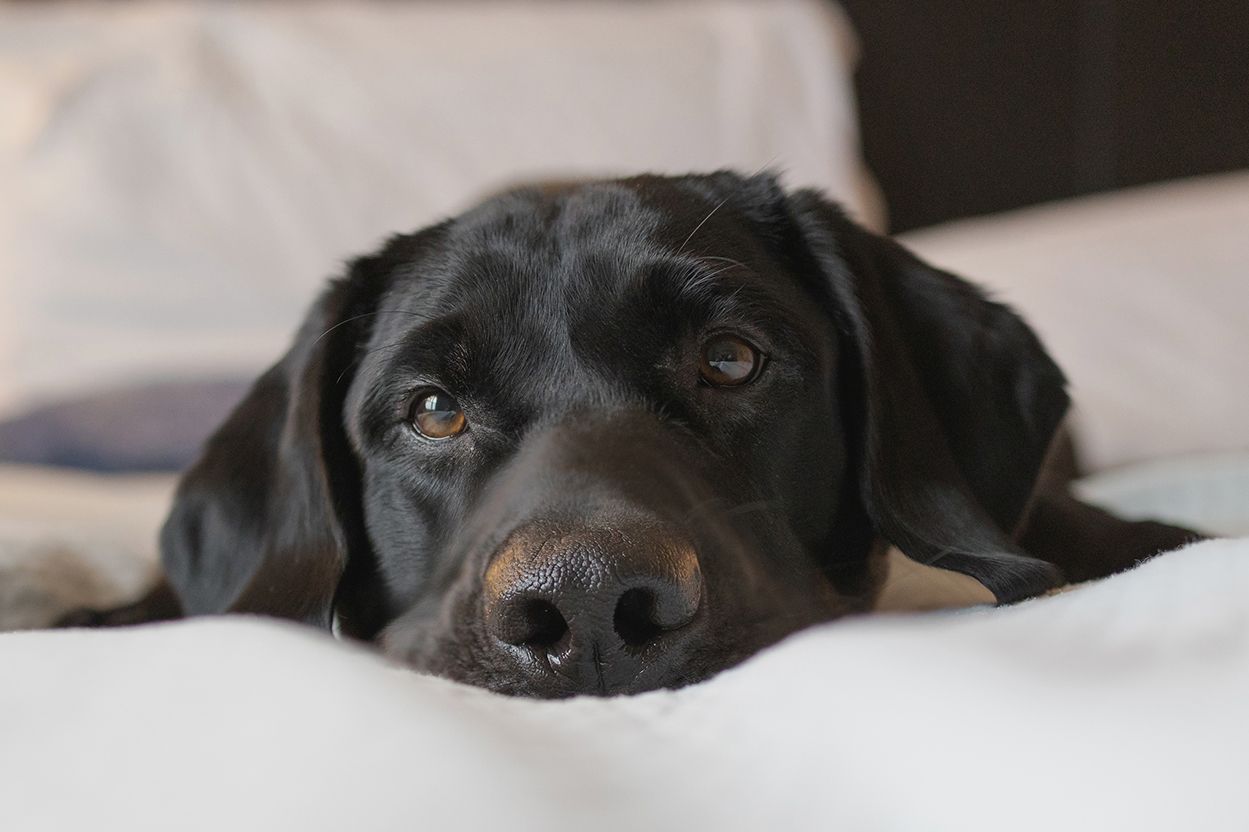
This may come as a shock to some of you, but I have a mild (okay fine, severe) obsession with dogs. So, when clients call me for a photo session and ask, "Can I bring my dog?" I get really excited. Like jumping up and down, tail wagging excited.
Prepping your pup for a photo session can be easy, but it can also take a little time to ensure it goes smoothly. It is absolutely worth it to make sure your dog is comfortable, for both your dog's sake, and your photographer’s safety.
Disclaimer: I am in no way an expert in dog behavior. So please, if you have any questions or concerns about your pets, contact your vet. These are just my experiences and examples that have worked for me, both as a pup parent and and a photographer.
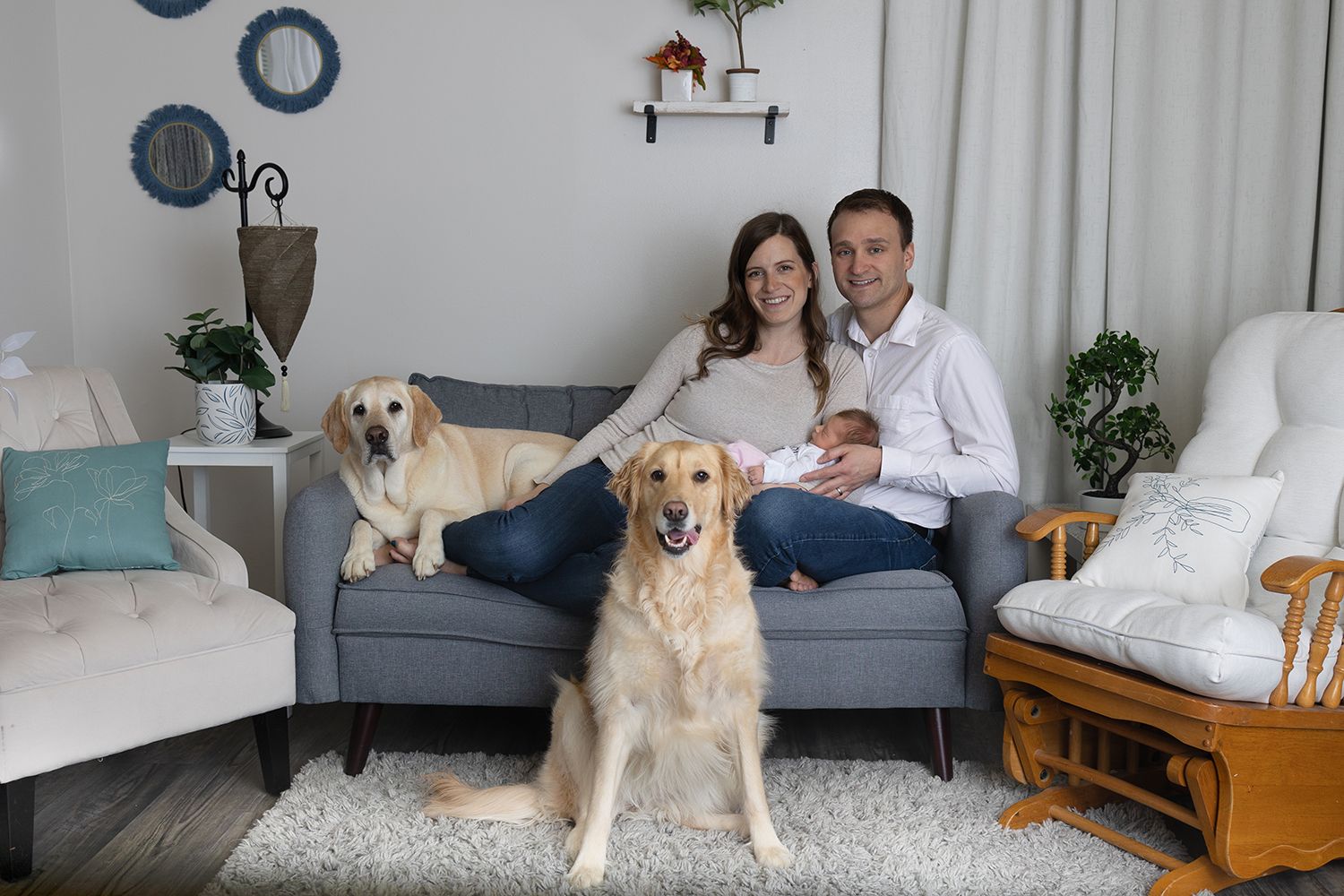
Health Checks:
First of all, make sure your dog is healthy before your session. When dogs aren’t feeling well, they can sometimes show you in unpleasant ways. I once met a dog at a home consult who was typically super happy to meet new people. However, for some reason, when he met me he was barking, pacing, and posturing in a such a way, warning me to stay back. Later, the parents found out he had an ear infection. When we met at another time, he was a lot less anxious around me.
If your furry friend if physically uncomfortable, she is not going to be at her best. According to PetMD, signs your dog is in pain include panting, excessive licking, restlessness, aggression, shaking, trembling, twitching muscles, and difficulty lying down. It's also important to pay attention to behavioral changes in your dog. If you dog is doing something abnormal, chances are she is feeling abnormal. Shaking her head and dipping her head to the ground, like she is trying to get something out of her ear, may indicate ear pain or an infection.
Our hound dog Gus Gus used to get ear infections often. Those big droopy ears were prone to ear infections, common in hound dogs.
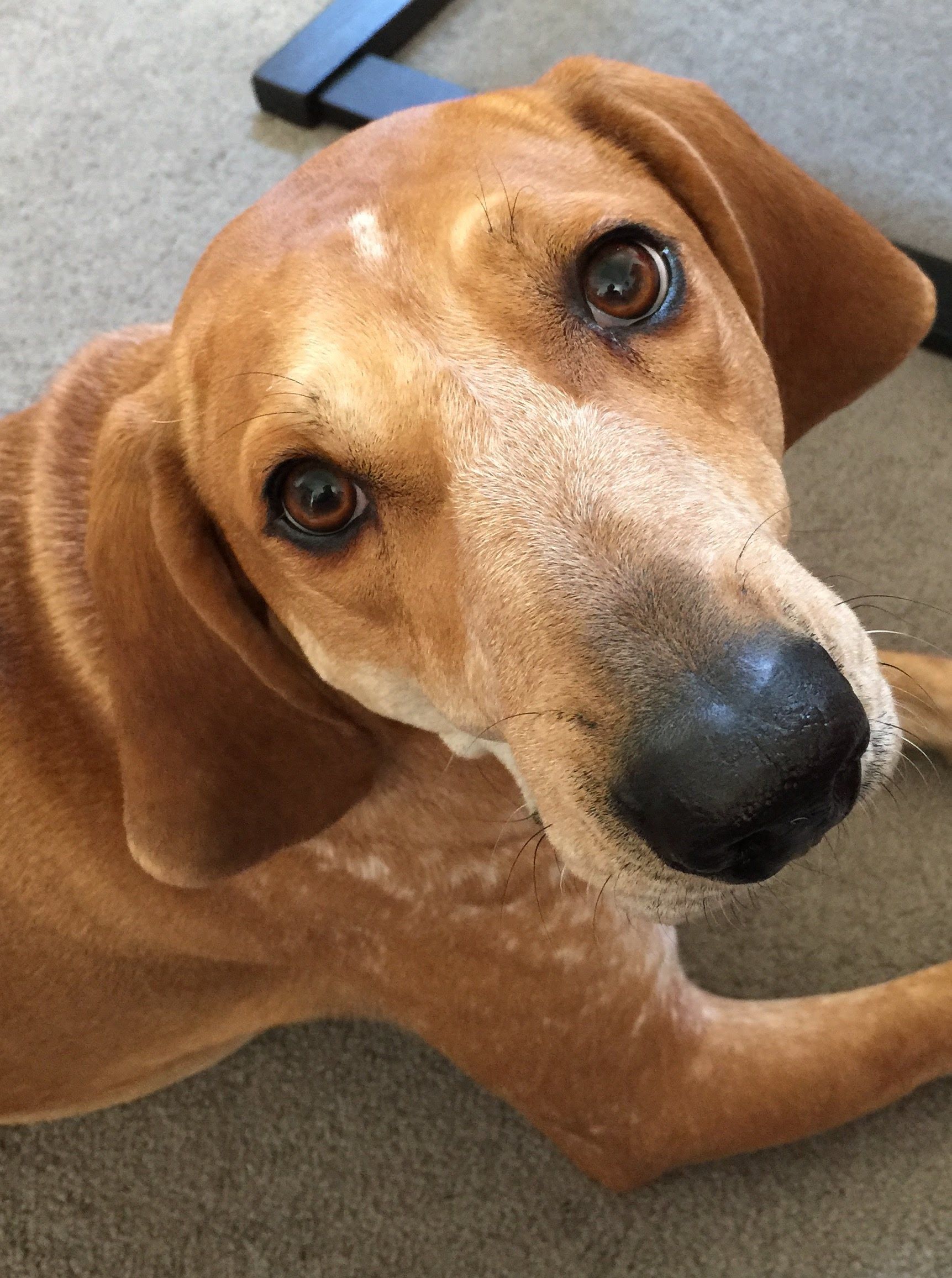
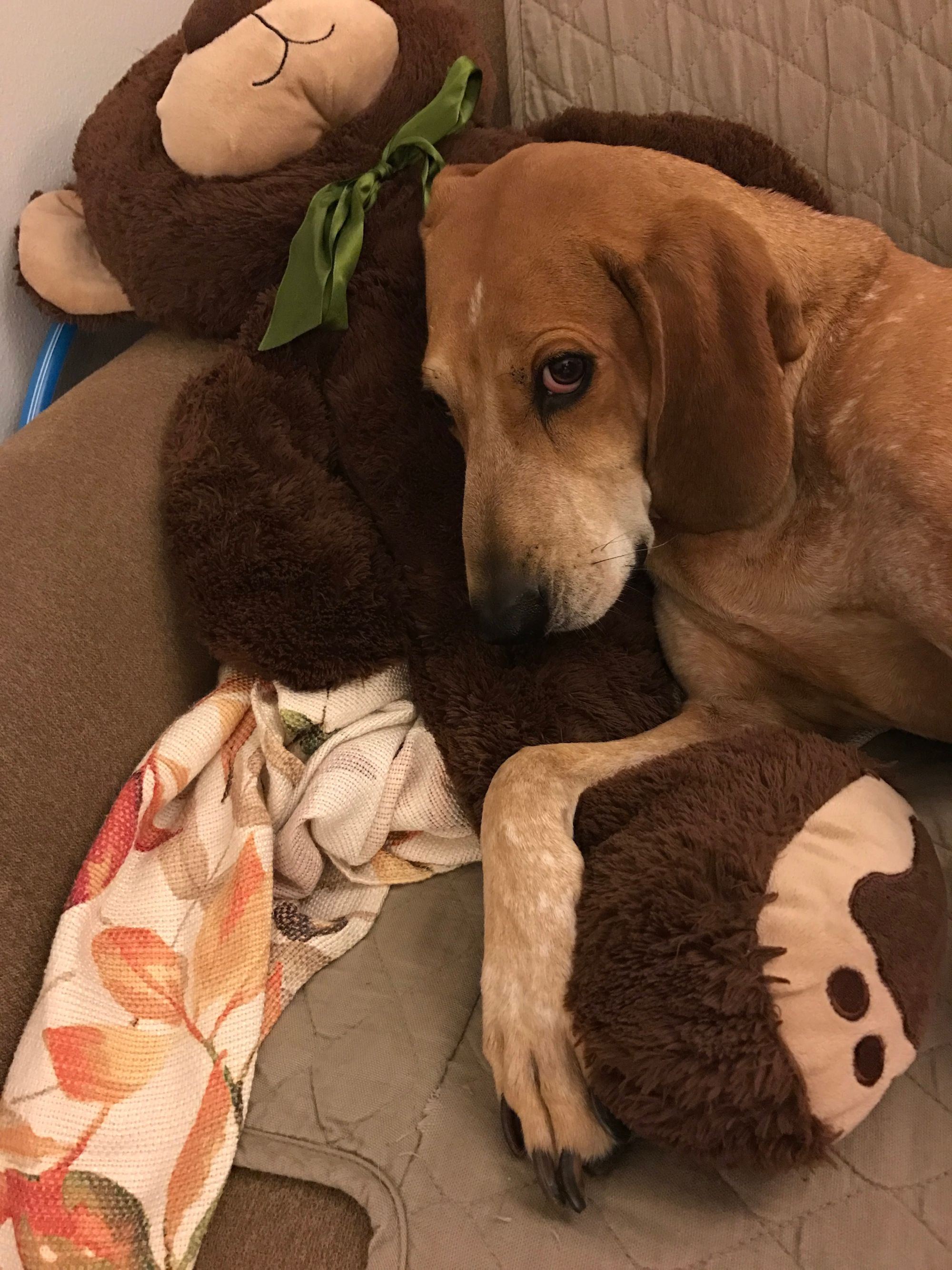
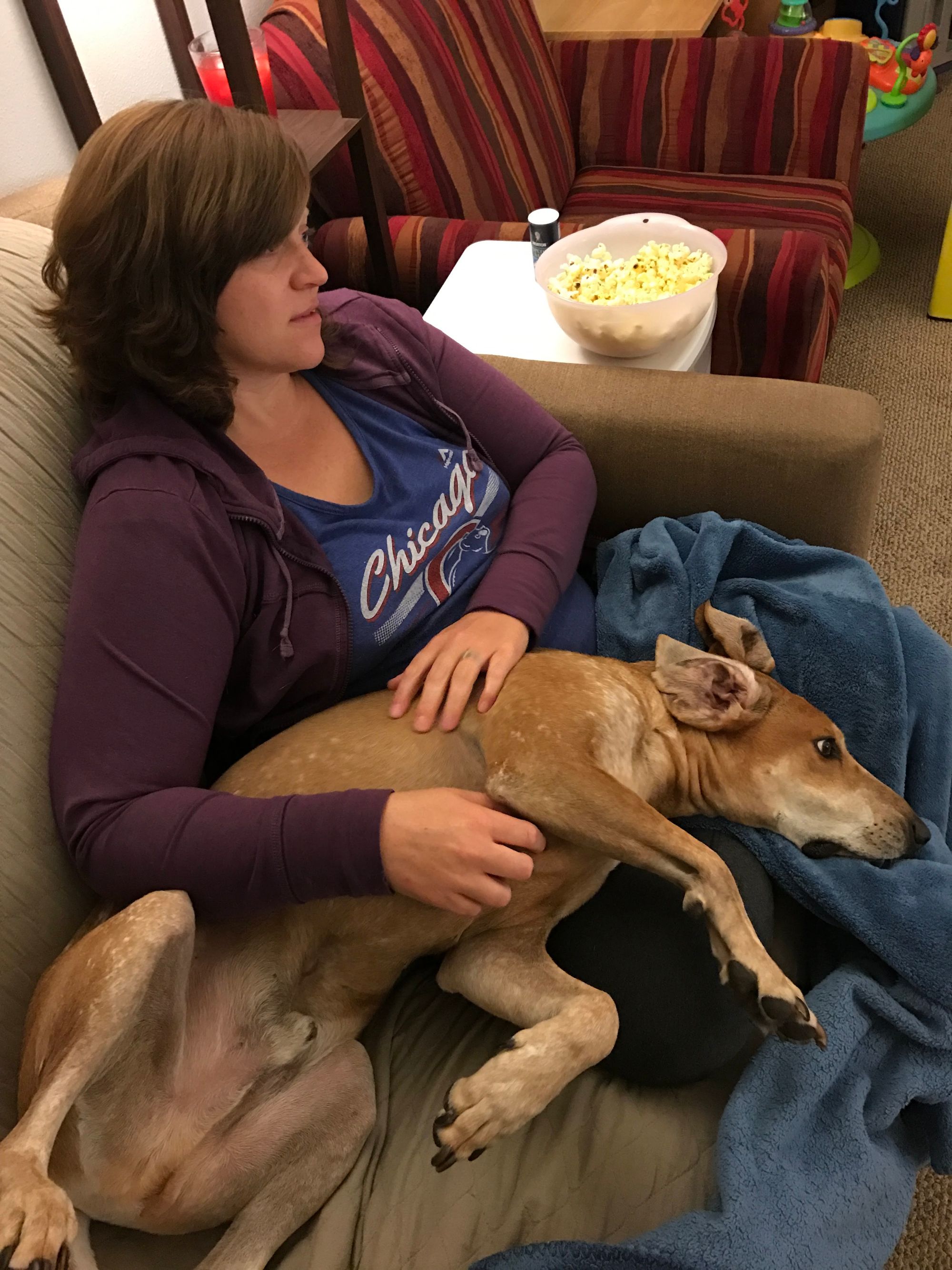
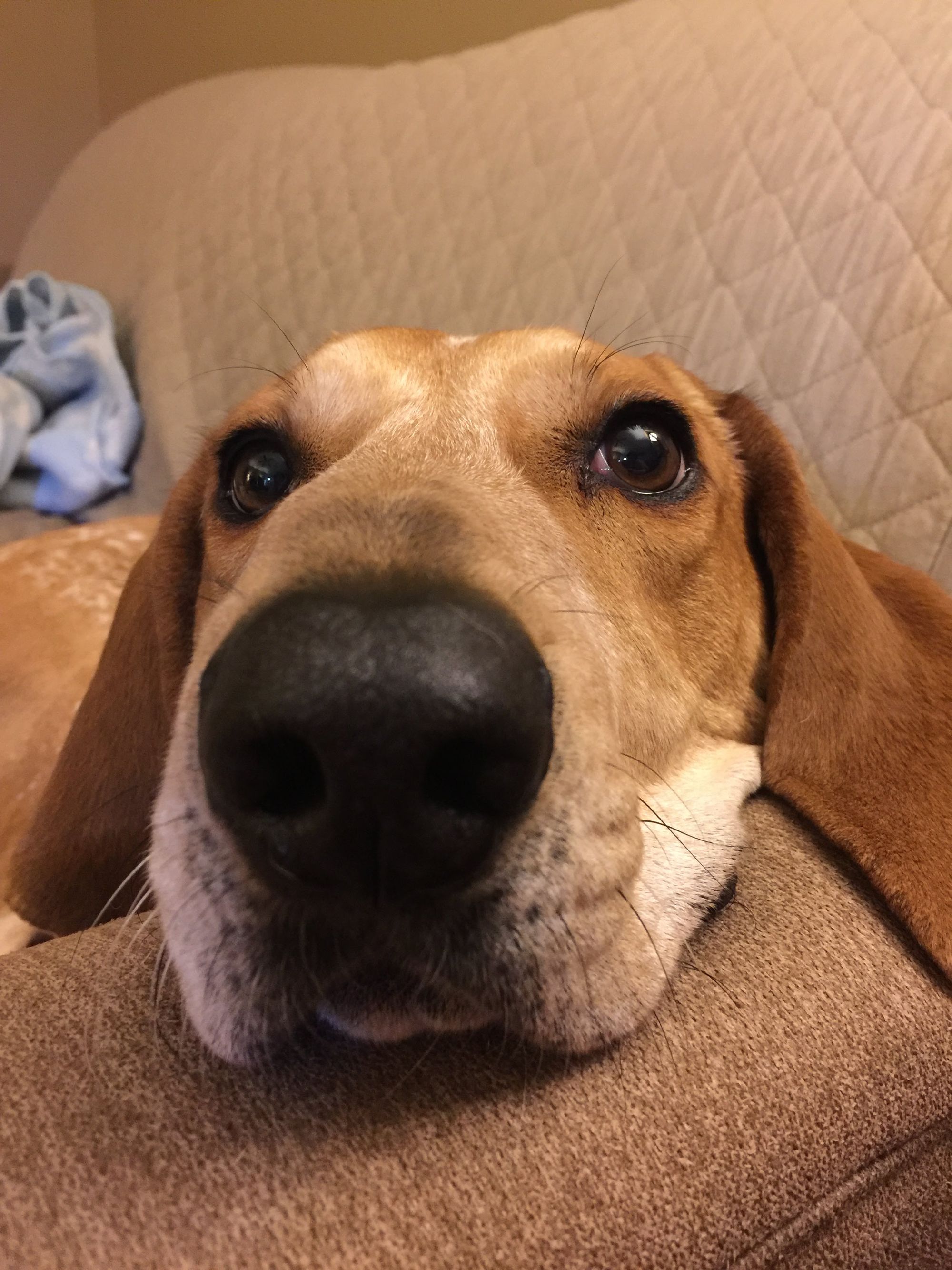
Anyway...
I am not saying you need to have your dog into the vet for a check up just before your lifestyle photo session, not that it wouldn't hurt! Just keep an eye out for behaviors that might suggest discomfort.
Check out this site to see some warning signs that your dog may need a visit to the vet.
Transitions
Having a new family member can be a big transition for both humans and dogs. As humans, we can usually verbalize the stress and anxiety we feel when things change. Even toddlers can usually verbalize some kind of distress when a new baby comes, ya know… screaming tantrums… lol, jk… not really.
Transitions are hard.
Dogs on the other hand, have to rely on their human’s ability to interpret the behavior (of a completely different species) for signs and signals of stress. If we are not aware of our own dog's stress signals, things can get real hairy, real fast!
Keep in mind, your dog is dealing with a lot when a photographer comes over for a newborn photo session.
First, your furry friends are learning how to deal with their new lifestyle and getting less attention and sharing space and time with the new baby. Before Baby, often times our pups were the center of attention, and that change can be stressful.
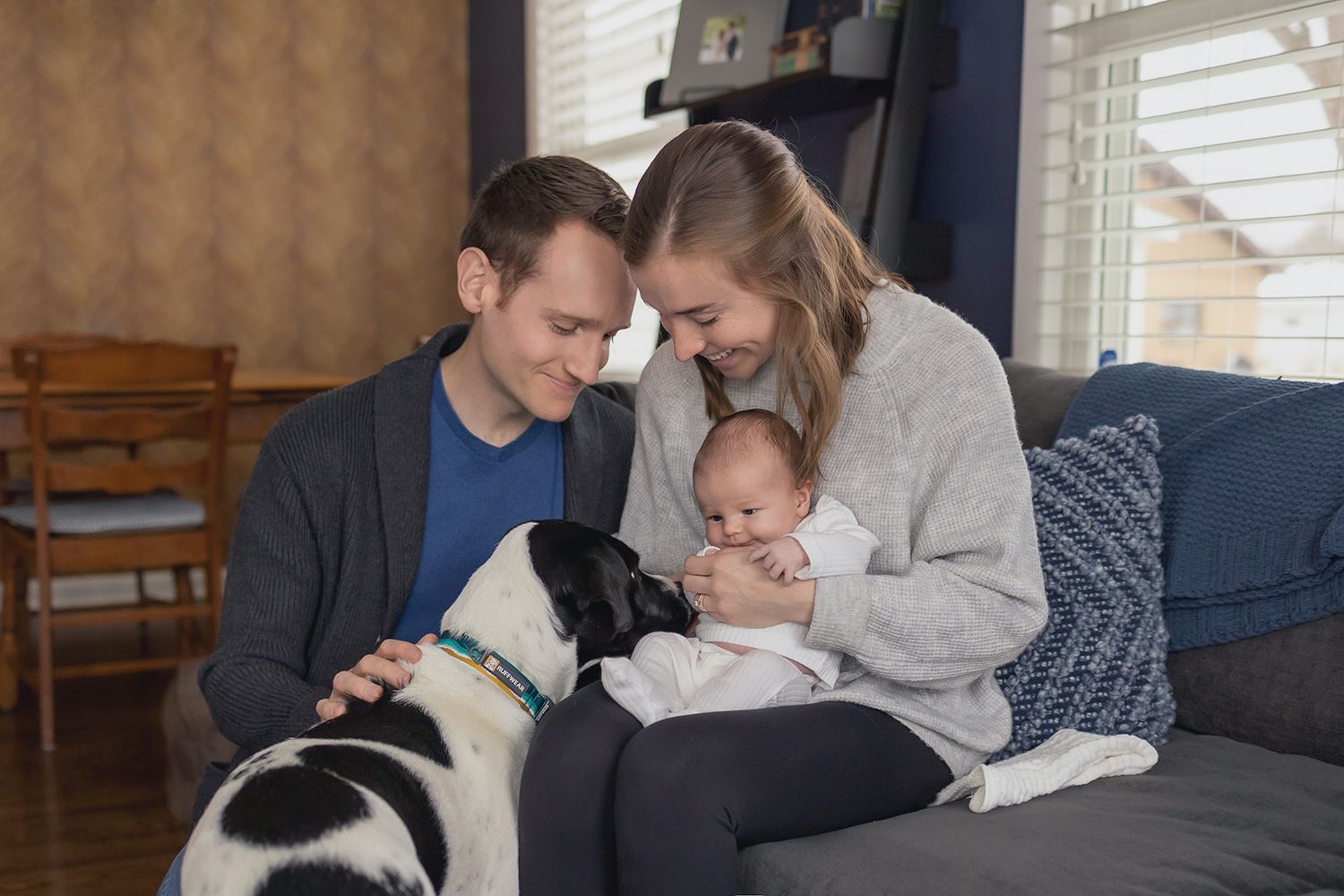
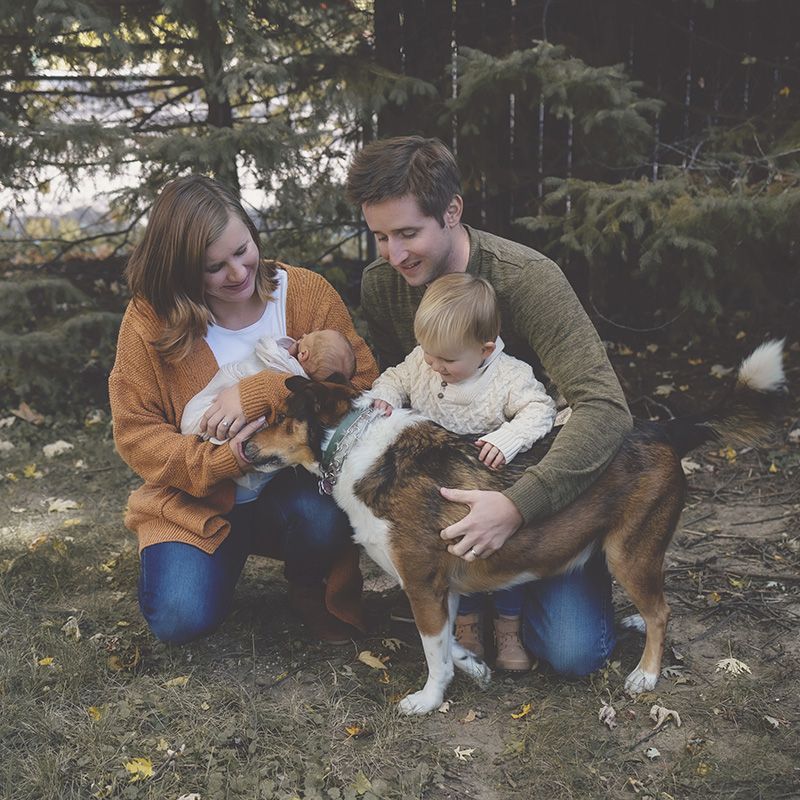
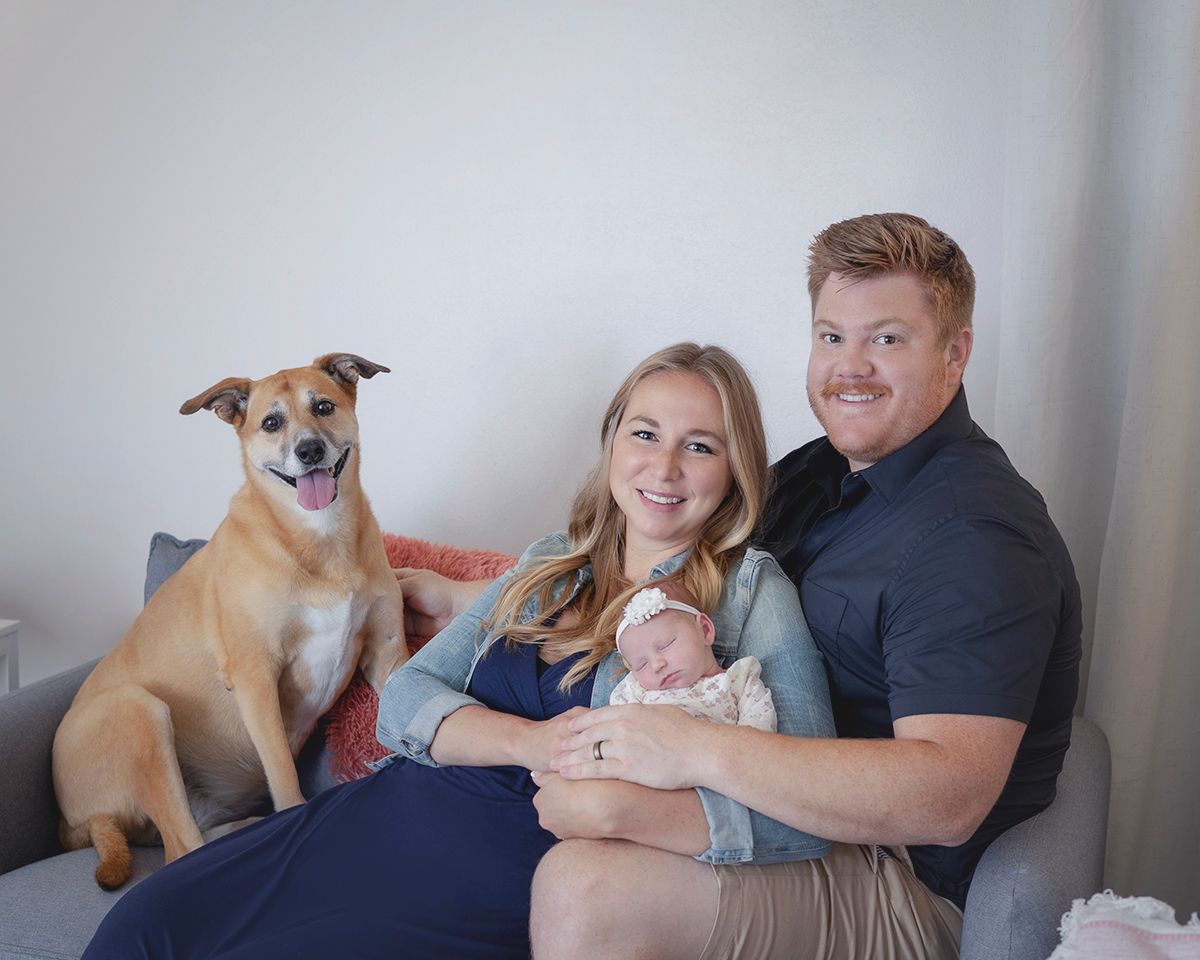
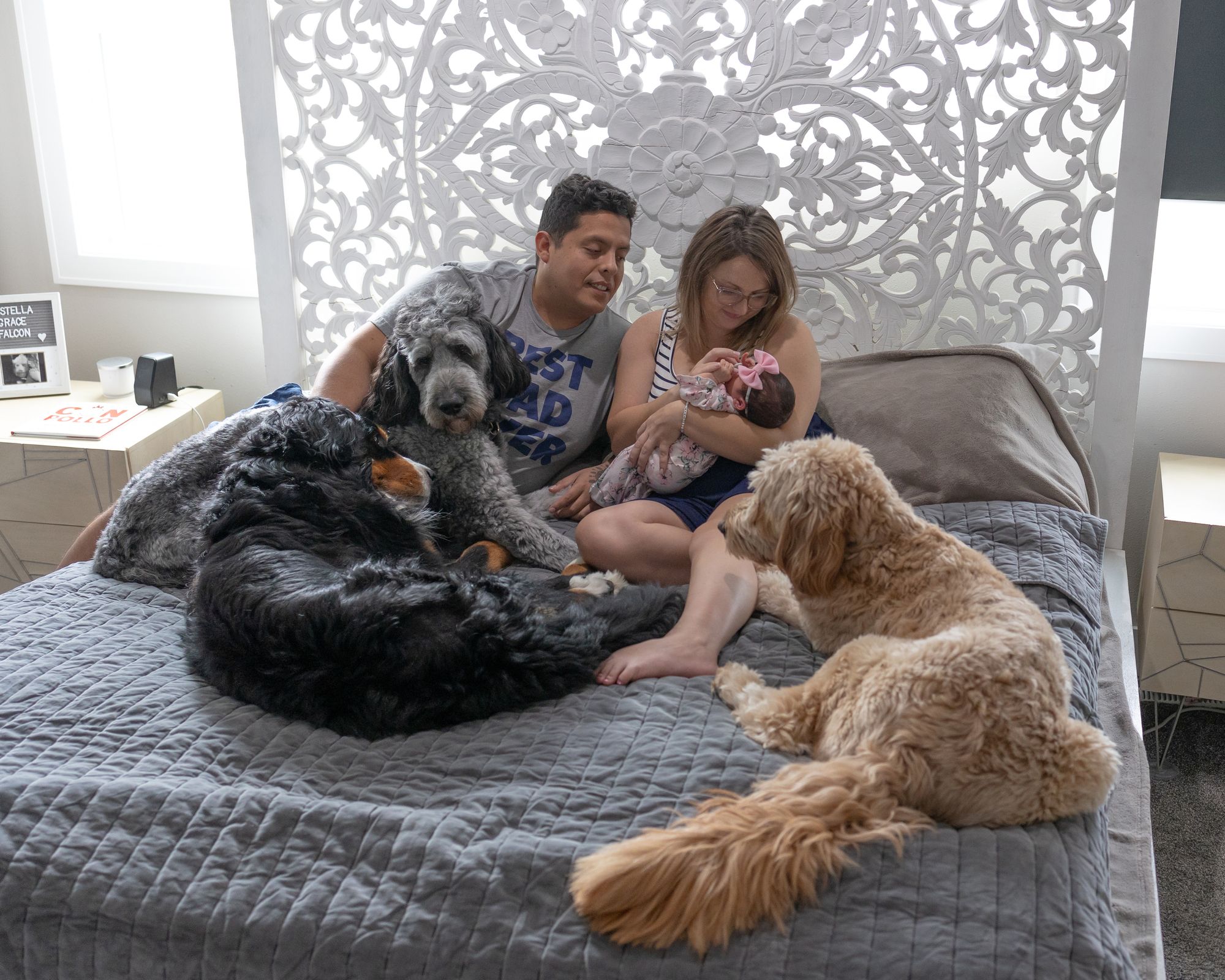
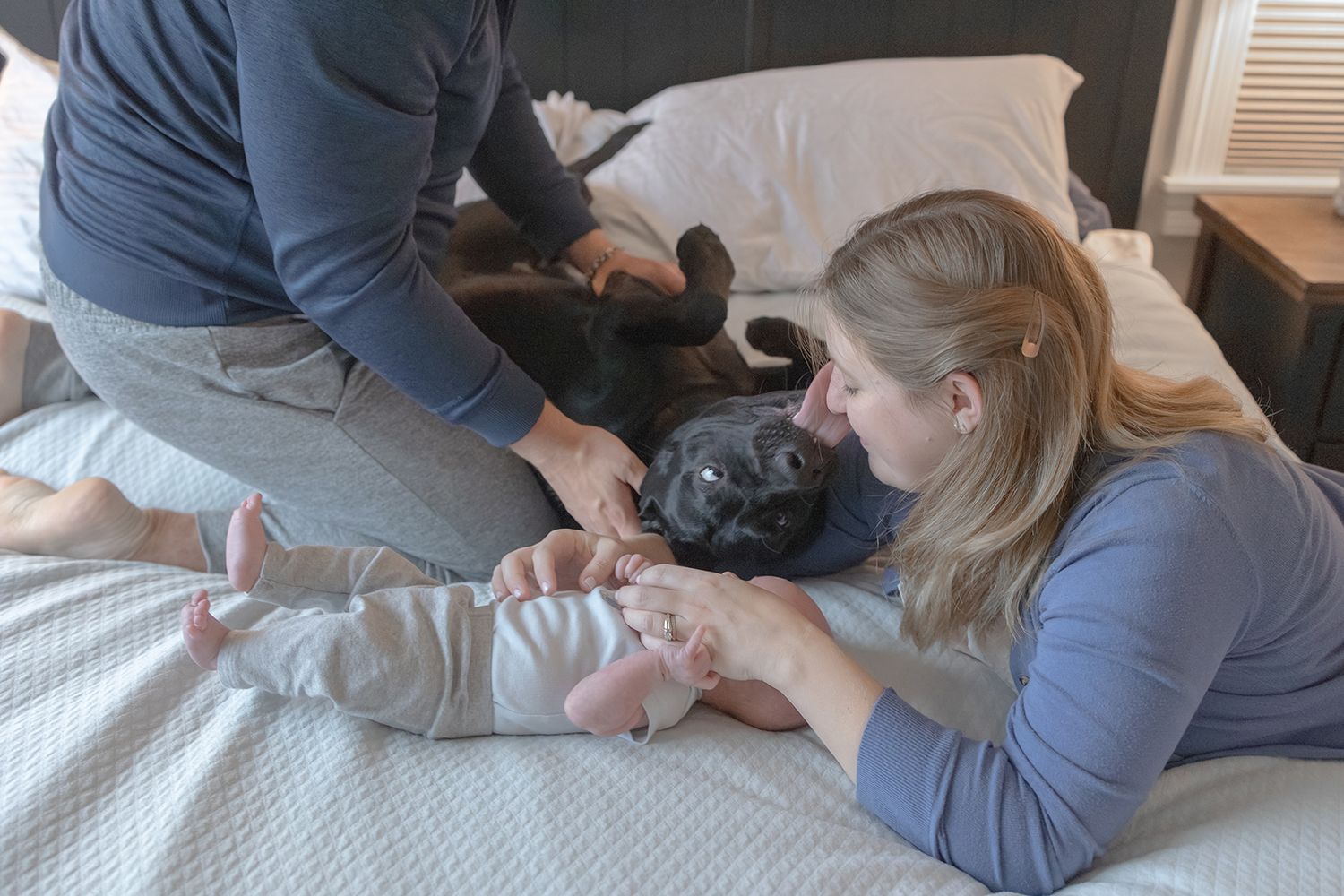
Second, your pup has to deal with a new human (your photographer) coming into his home. A new human that also has a strange black boxy metal thing that keeps hiding her face, while she tries to get his attention. Fido doesn't know if that person is a threat, wanting to hurt someone in their pack (especially the newest and smallest member), and WHAT THE HECK IS THAT THING YOU KEEP PUTTING UP TO YOUR FACE??!!
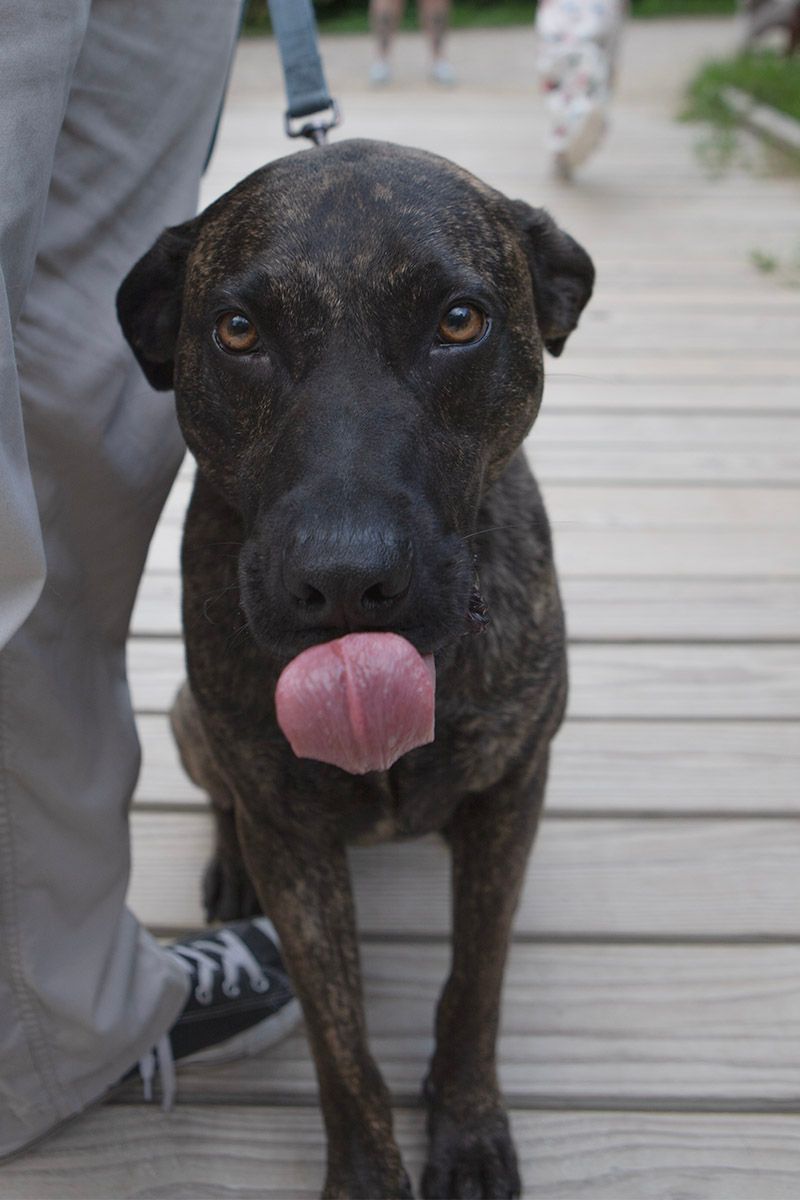
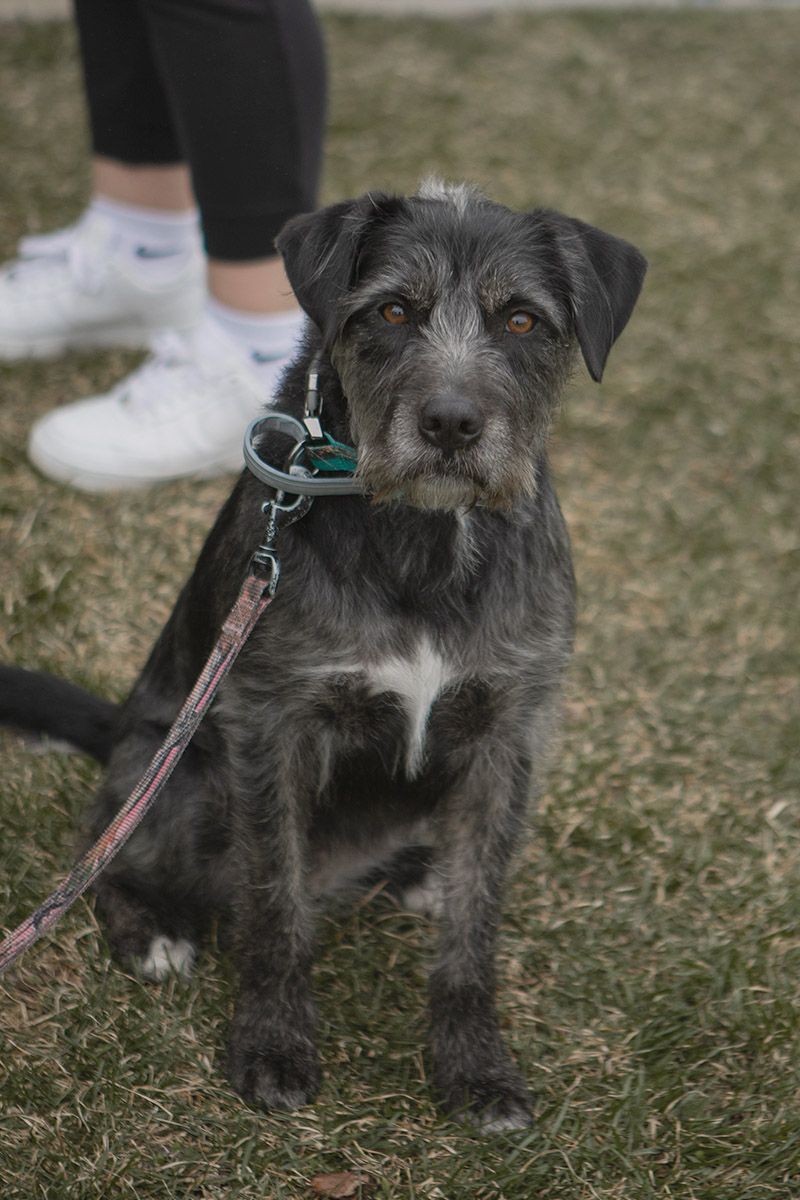
It's a good idea to invite your photographer over for a home consult, especially if you plan on incorporating your dog in your photos. I always set up a time to meet pups before the session, so on the day of the session, we are less likely to have issues. I have met dogs at their homes, on walks, and even at the dog park to get some play time relationship building. Not only is it fun for me, but it allows me to focus more on the natural family connections when everyone (including your pup) is comfortable with me during the shoot. I can get down on the ground and play with your dog, at their level, to get those perfect shots.
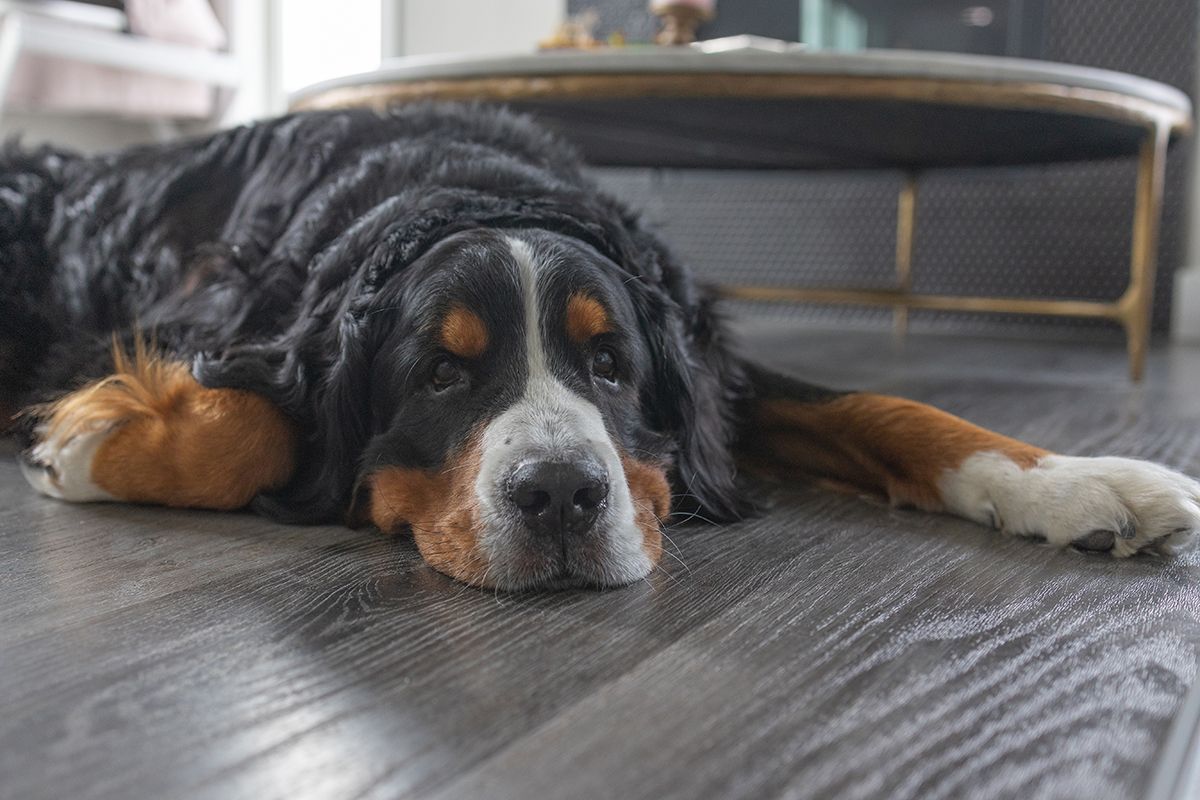
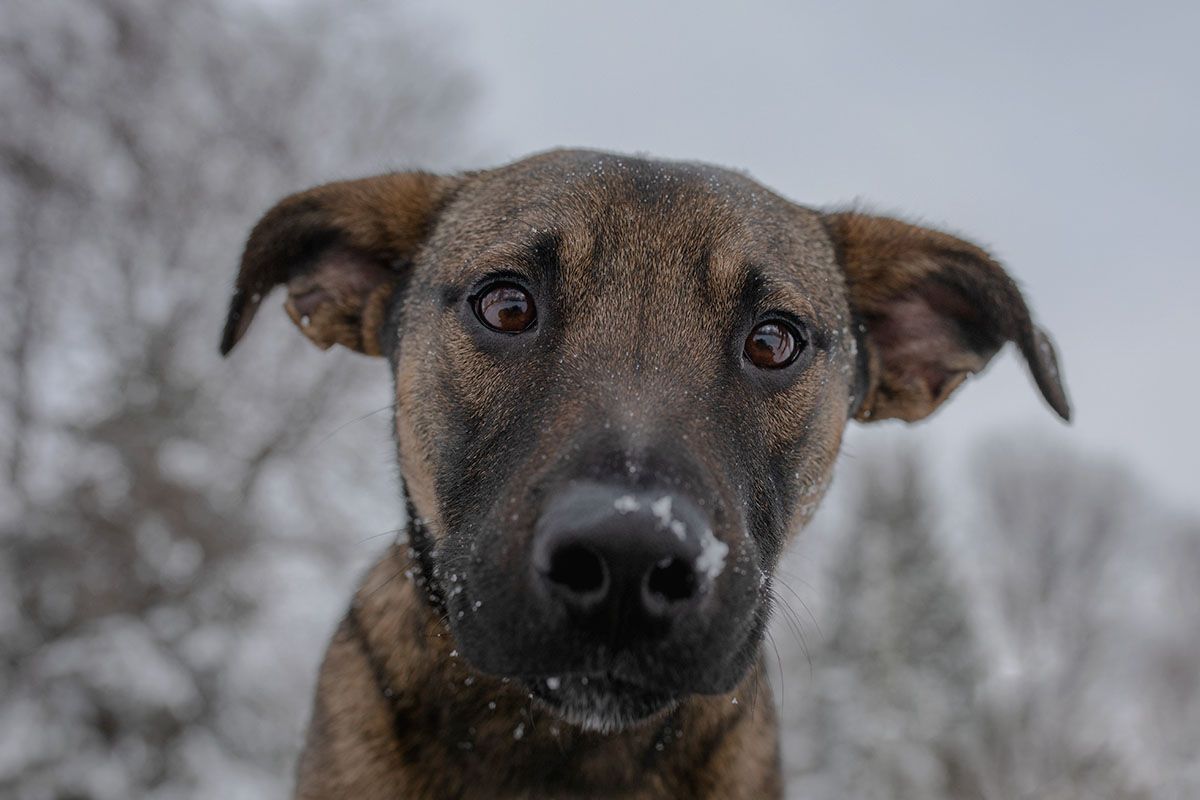
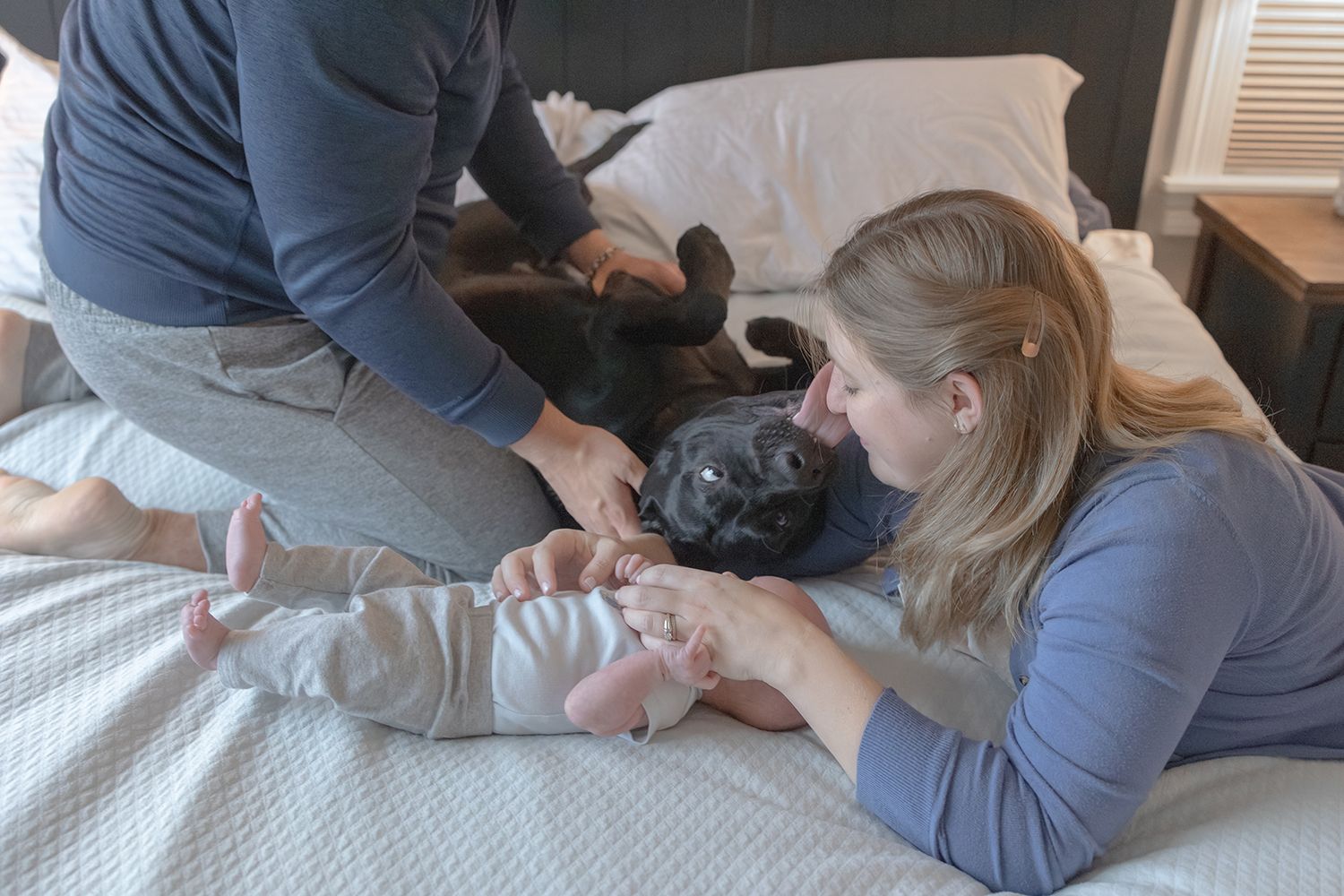
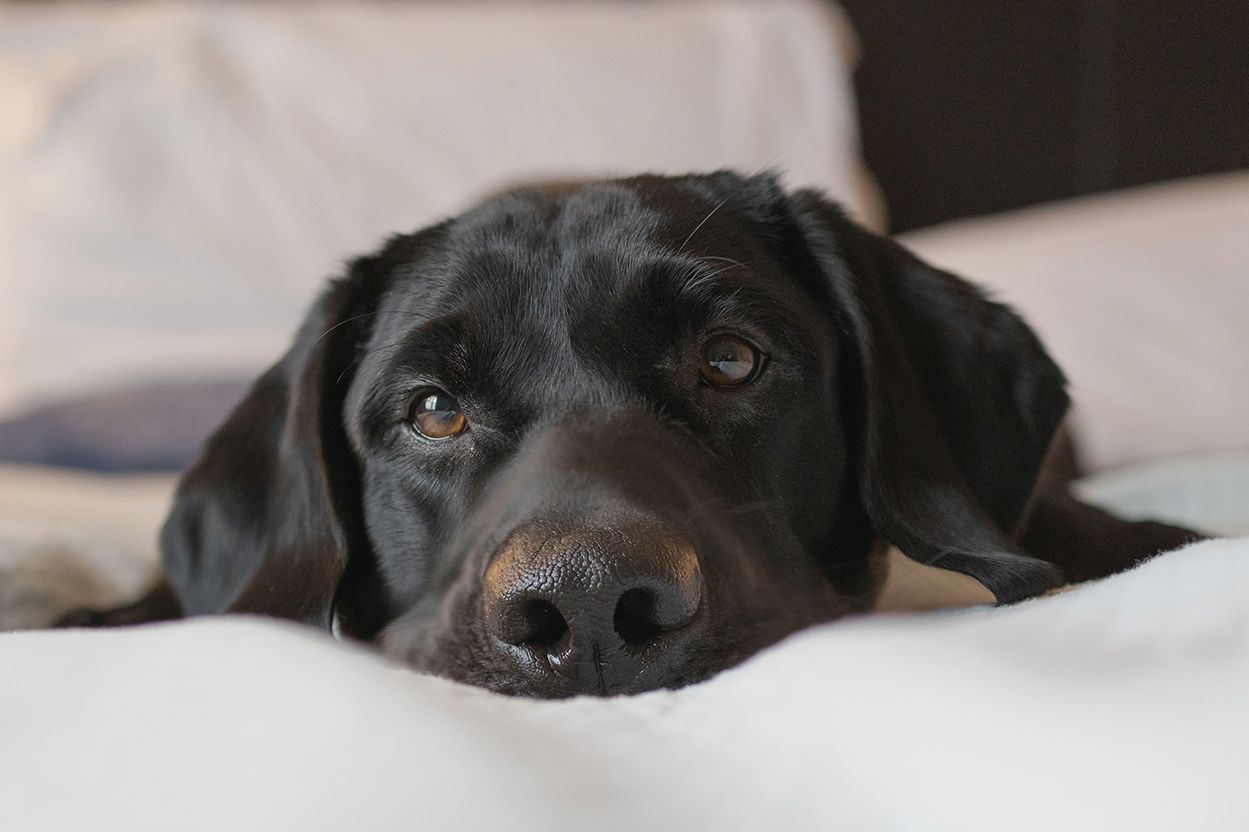
Make sure your photographer is comfortable with being on their dog's level.
Understanding Dog Behaviors:
Your dog's primary way to communicate with you is through her body language and behavior. Barking, growling, whining are all typical signs of stress, but knowing the more subtle signs can be a big help.
According the American Kennel Club, “Stress signs to look for include whale eye (when dogs reveal the whites of their eyes), tucked ears, tucked tail, raised hackles, lip-licking, yawning, and panting. Your dog might also avoid eye contact or look away.” Tongue flicking, drooling, shaking, excessive chewing, and shedding are all signs of stress.
Your dog may freeze or get stiff when they see something frightening. If this occurs during your session, you need to change the situation right away. Your dog may be telling your she is so scared she cannot handle the situation. What happens next is often a bite. If your dog is pacing around while your photographer is there, your dog may be telling you she cannot settle down while she is there.
These are all ways your dog is telling you they are not comfortable.
Again, it comes down to knowing your dog's stress signals Stay cognizant of her facial expressions and body language before and during the session. If you dog doesn’t feel comfortable with your photographer, she will tell you.
Here is a link to the American Kennel Clubs page on understanding your dog's stress signals, and how to calm them down. Take a look and see if this rings true for your pup.
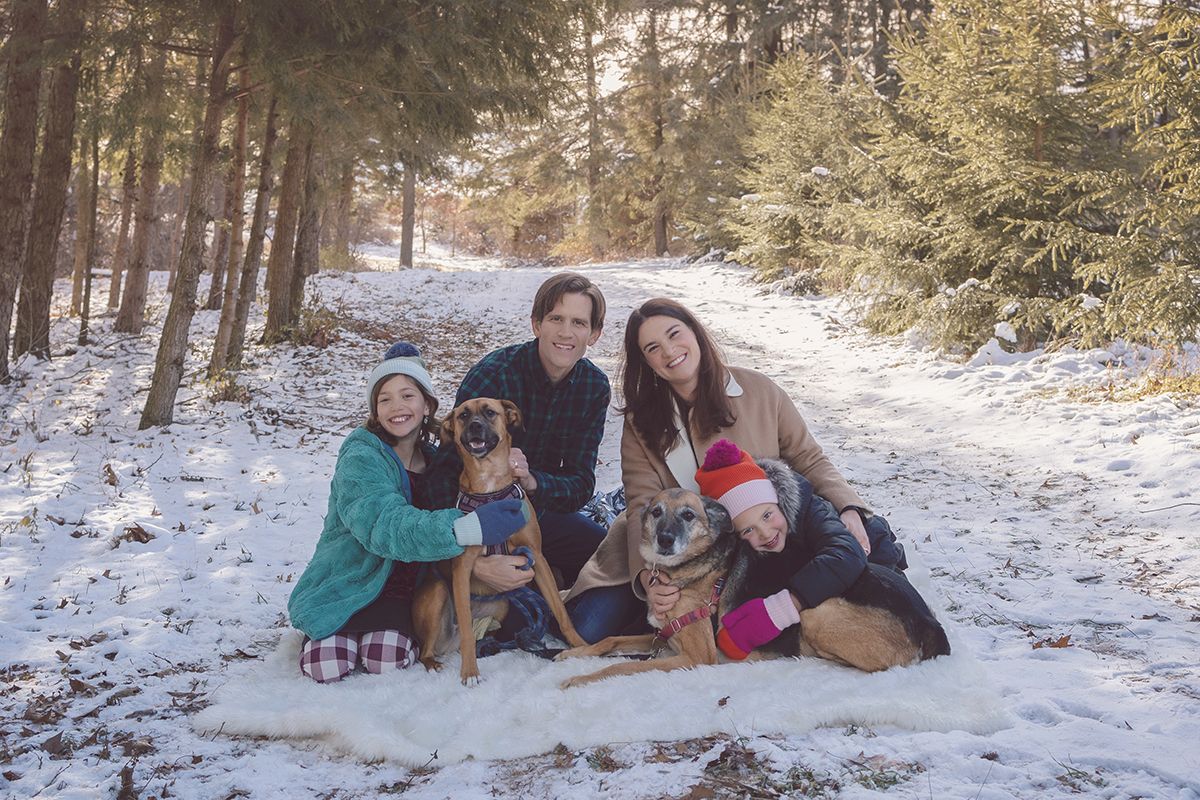
It might also be a good idea to brush up on your ways to calm your dog when she is anxious. Snuggling, brushing, and physical contact can calm your pet down at the moment. You can also set her up with a space that is just for her. Something peaceful, with toys and blankets. Somewhere with limited stimuli.
Check out this website for more ideas.
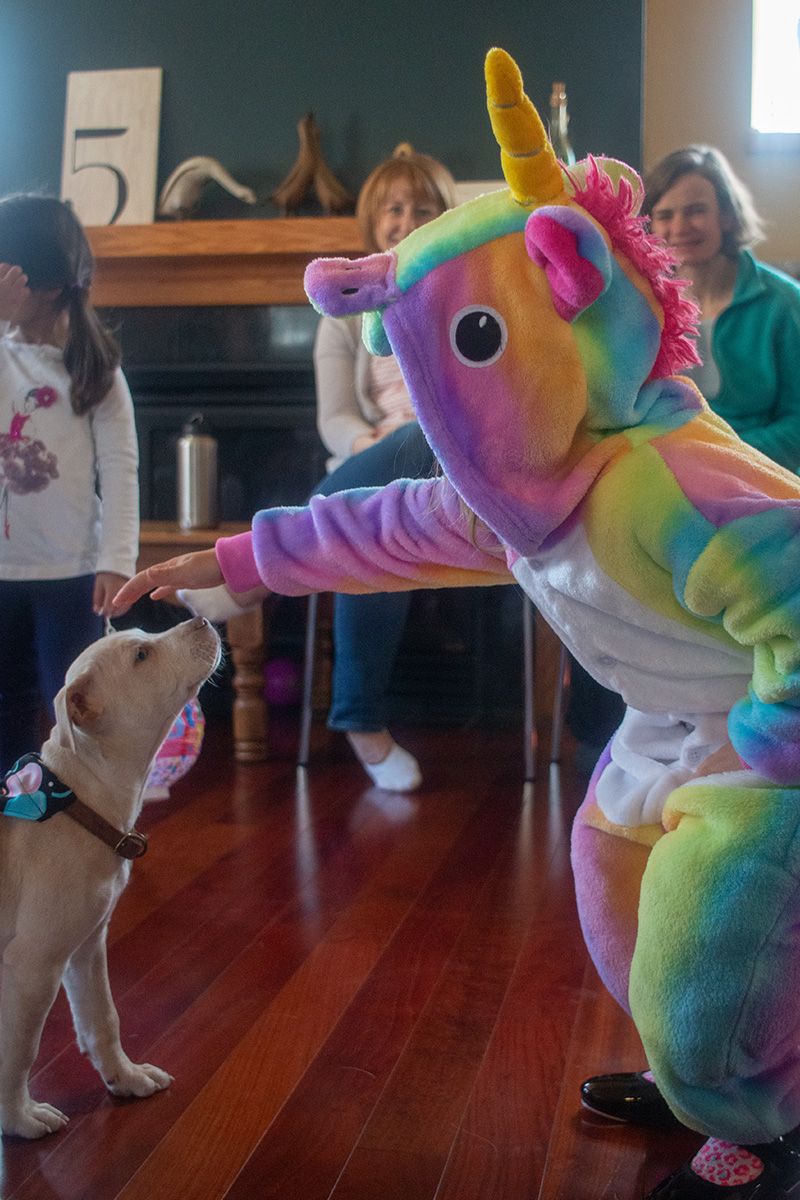
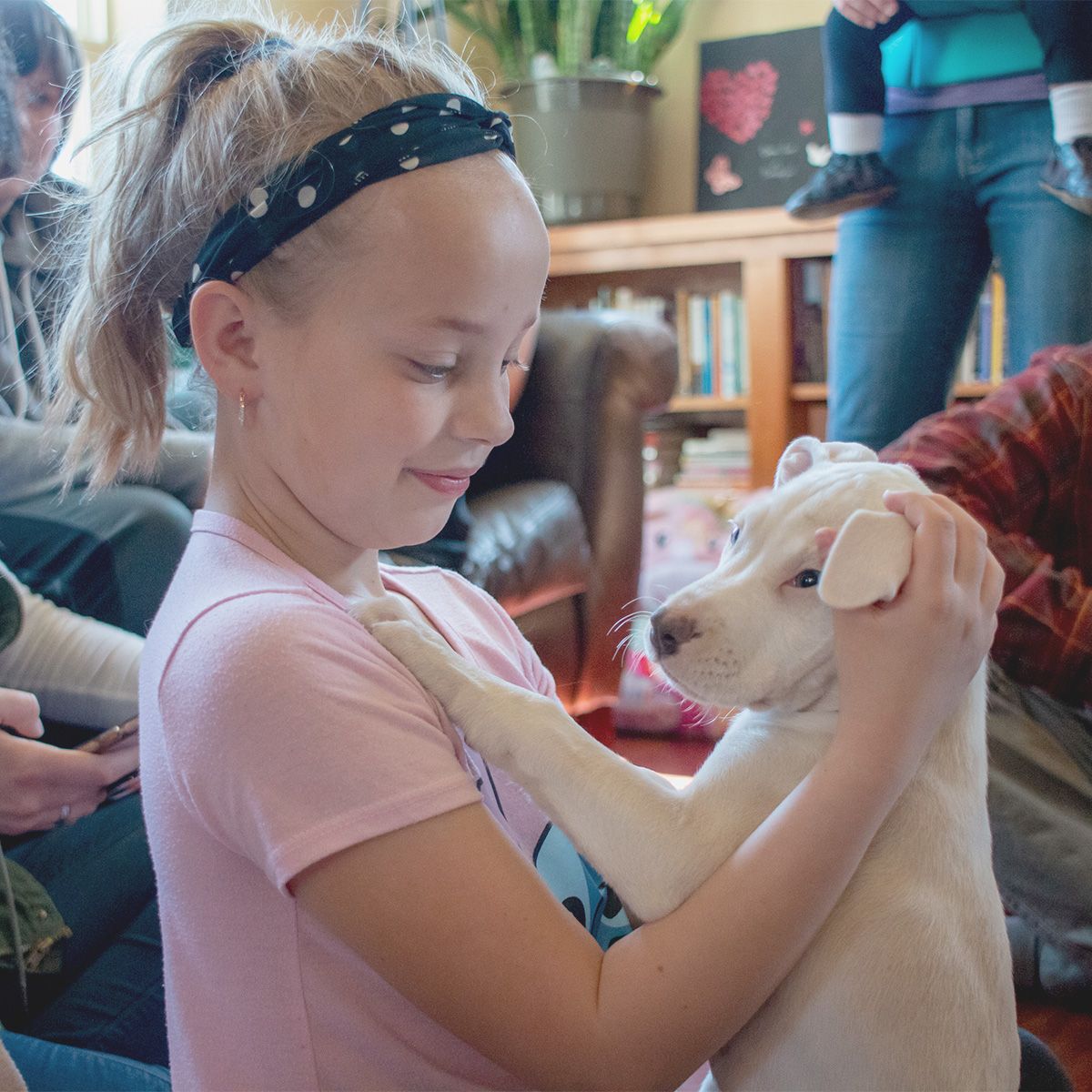
Practice:
Practice taking pictures of your pet a week or two before the shoot, so she is comfortable with the noise, the camera, the flash, and being the center of attention. Cameras are strange things to a dog not familiar with them. They are bulky and they hide a person’s face, which can be unnerving to a dog. If you do not have a large camera, grab some that that is dark and about the size of DSLR camera, put it to your face, and follow her around for a few minutes. See how she responds. Practice this a few more times throughout the week. The goal is for her to get comfortable with it.
Extra Training:
Before your session, get your dog prepped by working on some basic training commands she already knows. Practice commands like sit and stay, which might keep her focused during the session. Training can be a stress release for dogs, as it gives them something to focus on, other than the stranger in their home.
Exercise:
Get your dog enough exercise before the shoot, if possible. This is one of the best ways to help your pup stay calm during your shoot. Hopefully you know what your dogs needs for exercise. You know the saying, “a tired dog is a happy dog?” You don’t want an exhausted pup, but hopefully you know your dog well enough to know what is too much. A dog park visit early in the day, a long run or walk, even a 10 minute fetch session in the backyard can be super helpful.
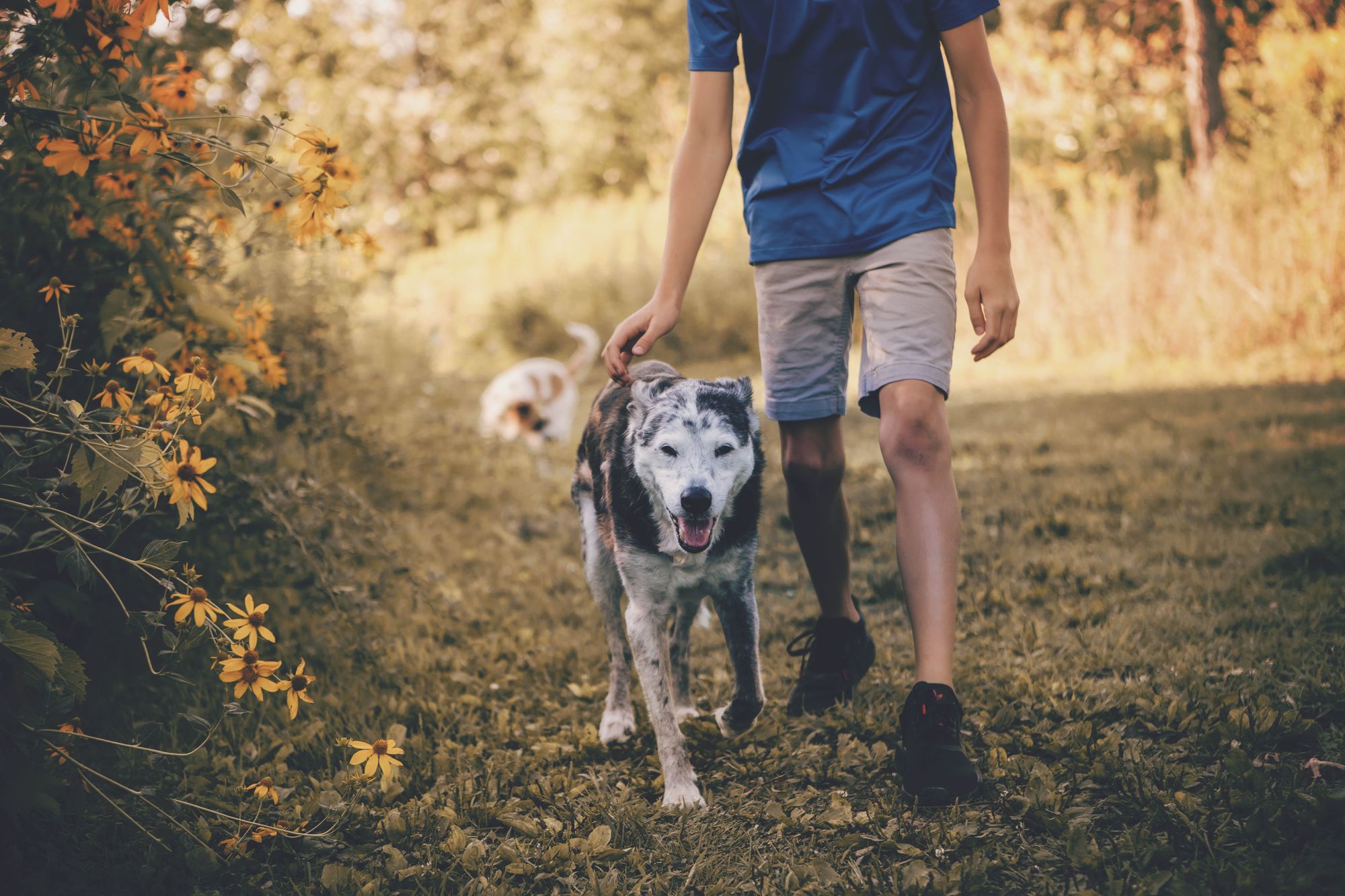
Best Treats EVER!!
Hopefully, you know what your dog goes absolutely bonkers over. This is MOTIVATION!!! A dog will move Heaven and Earth for the right incentive. Is it cheese, peanut butter treats, or freeze dried liver? Keeping some freeze dried liver in your pocket can be a tremendous incentive for your dog. Thankfully, the camera technology has yet to capture smells, as you may offend your human family members with the horrid smell of freeze dried (insert any meat) in your pocket.
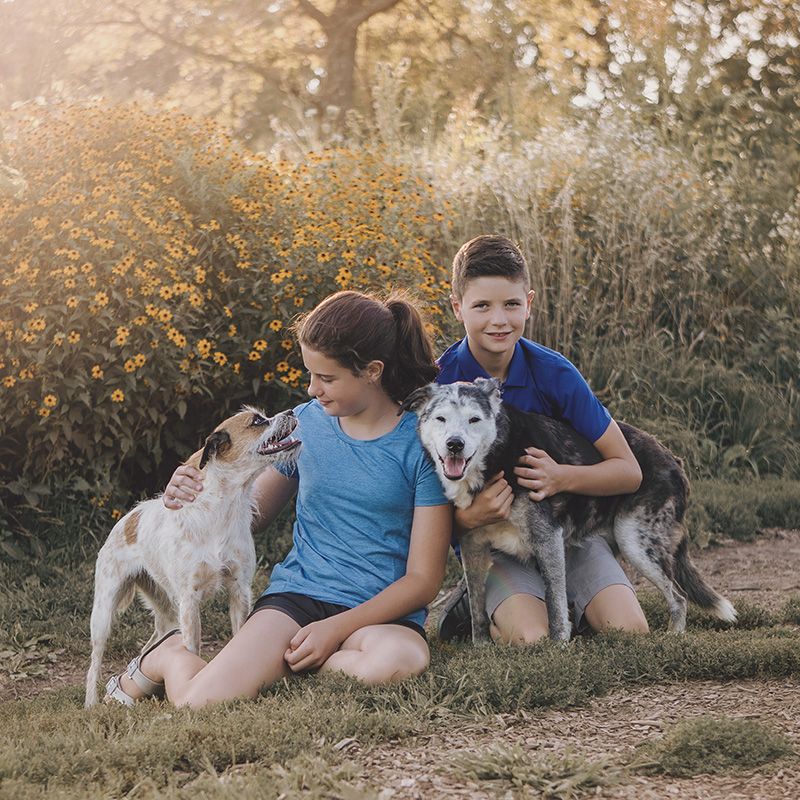
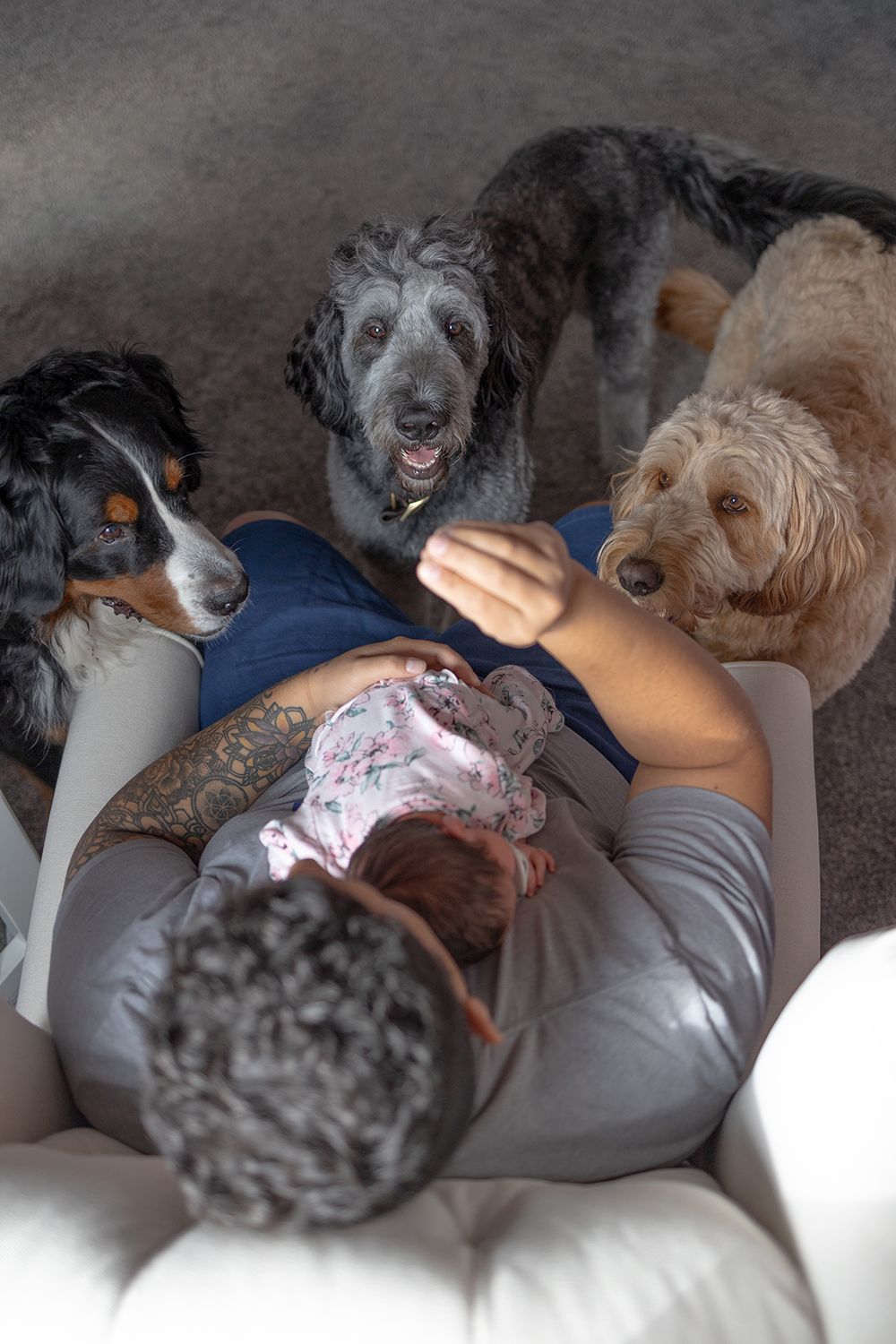
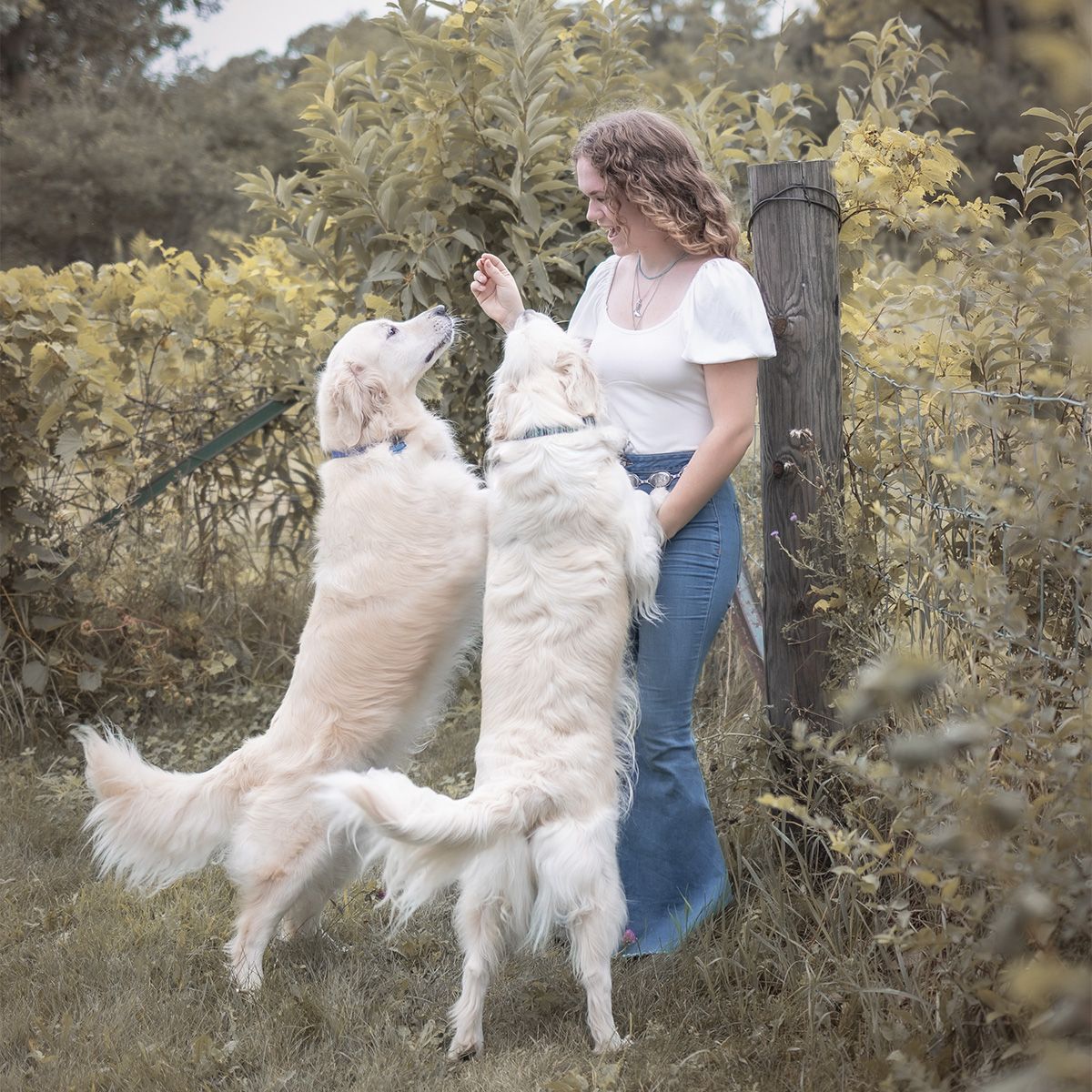
It also might be a good idea to keep your dog a little hungry before the shoot. Food is a great motivator. Don’t starve your dog, but maybe feed your dog half her breakfast before the shoot and half after, or even during.
Keep Leash Close:
If your dog cannot be trusted around strangers, keep a leash close by. This way, you can put her on lead if she needs a break.
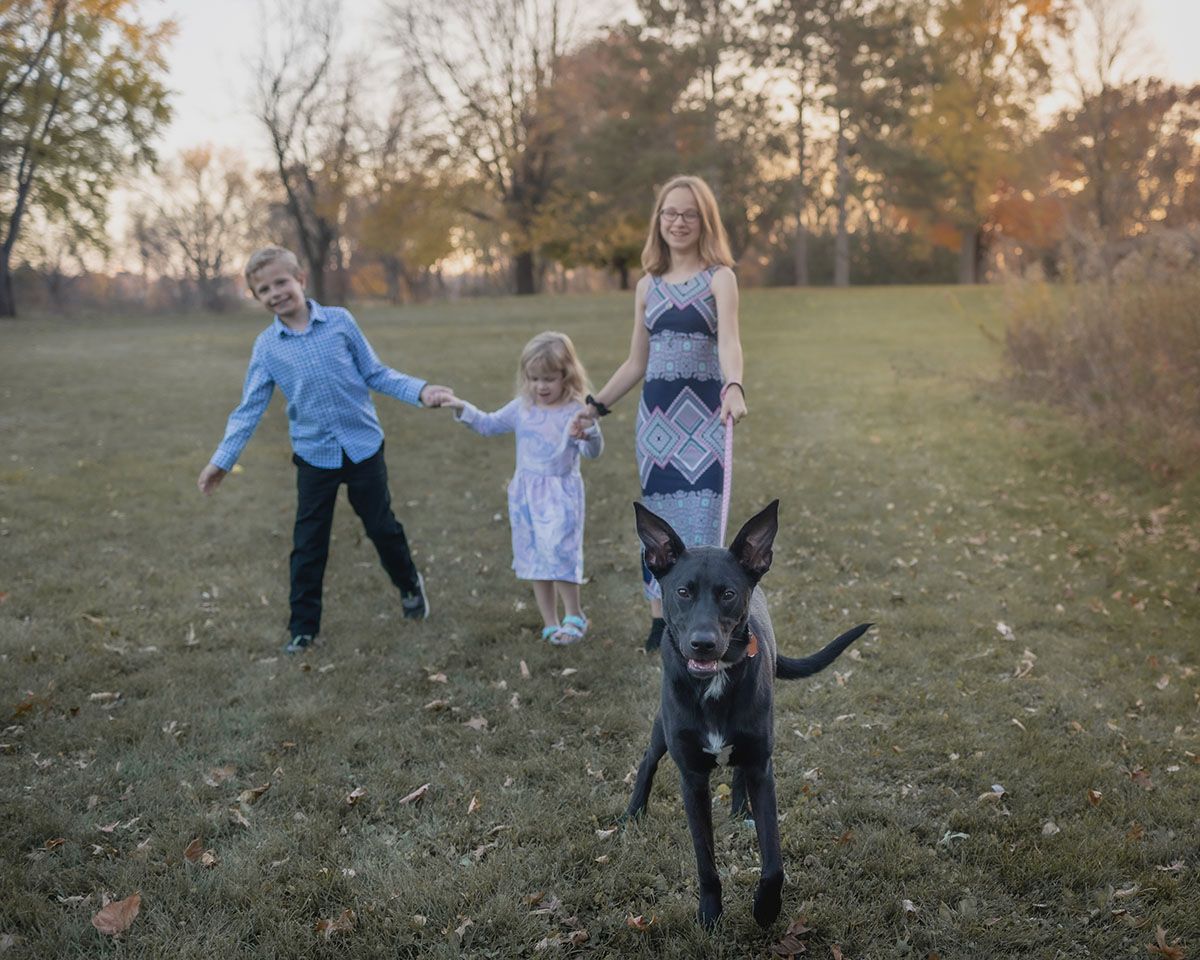
Grooming:
You may want to give your pup a teeth brushing, a bath, and a good brush before your session. Other grooming tips are to wash her collar and clip her claws. Or if you prefer, you can have a professional groomer do it a few days before.
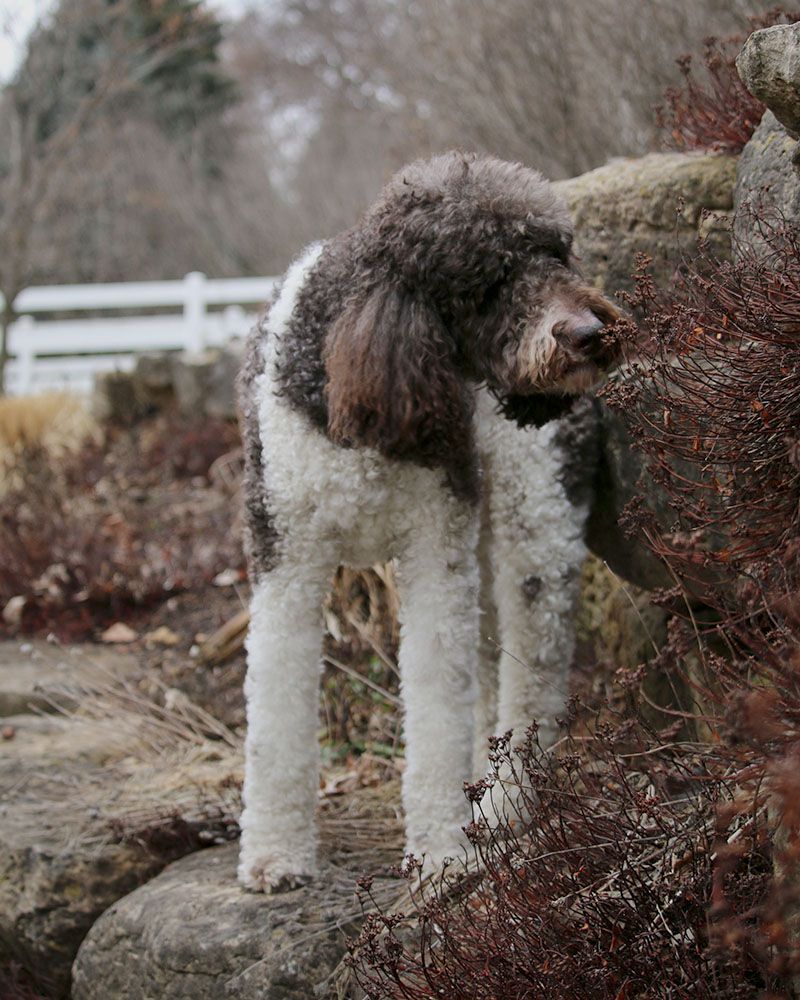
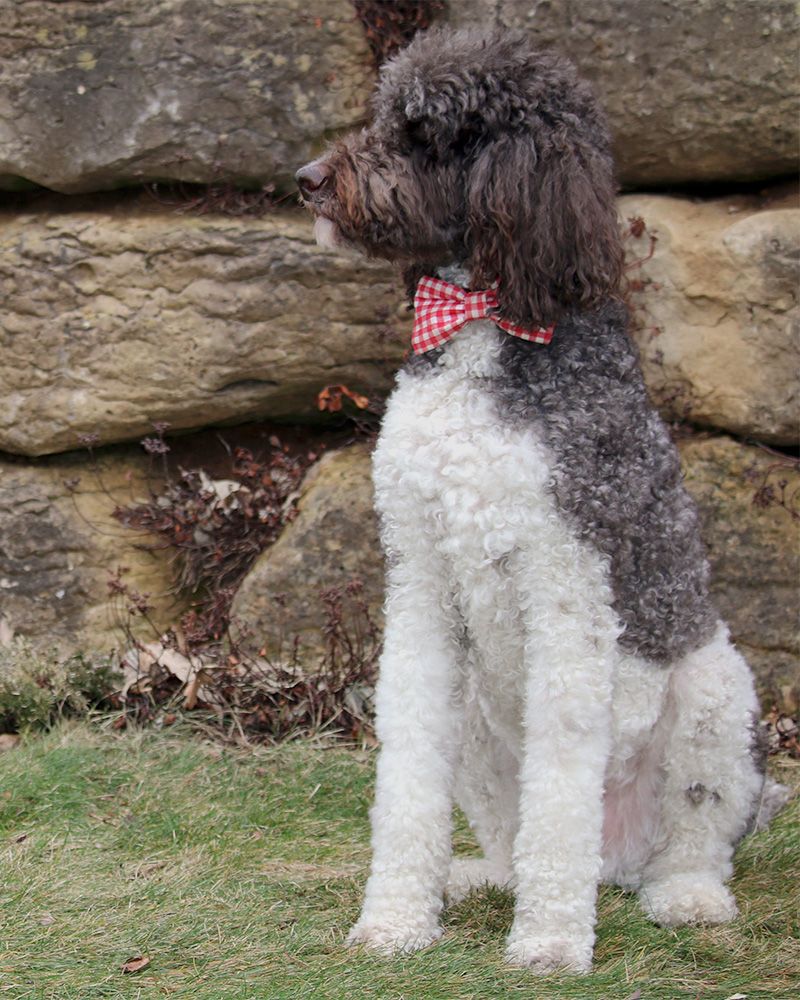
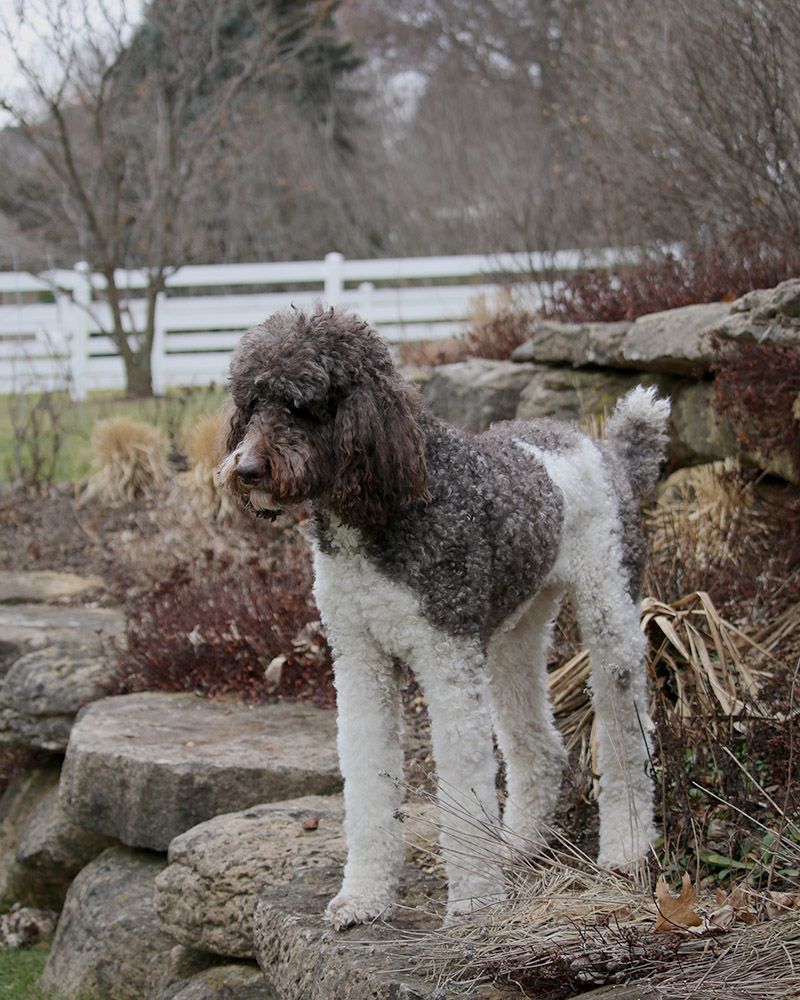
One of my heros is Patricia McConnell, PHD., certified Applied Animal Behaviorist, founder of Dogs Best Friends, and author of several books on dog behavior, most of which I’ve read. According to another hero of mine, Temple Grandin, “McConnell gives a voice to those who can’t speak in words and provides hope for fearful animals everywhere.”
You can learn more about Patricia McConnell here. Her website is a great place to start when you have questions about dog behavior.
In Conclusion...
The biggest take away from this, is to know your dog's behavior. In any situation, keeping your dog, your family, and others safe is contingent on paying attention to what your dog is telling you about how she feels. Know her stress signals, what scares her, what motivates her, and what calms her down.
Also, talk with your photographer about her level of comfort with working with dogs. Many photographers are great with dogs, but make sure they are aware of dog stress signals. Though I am not an expert, I am very familiar with dogs, their behavior and their stress signals. I have worked with dogs, been to multiple training classes with multiple dogs, and have studied dog behavior from many different perspectives. Like I said earlier, I am a little obsessed.
